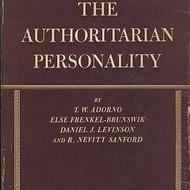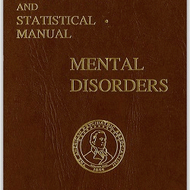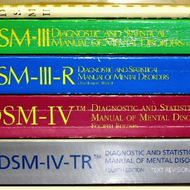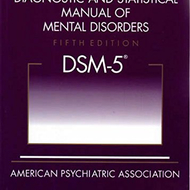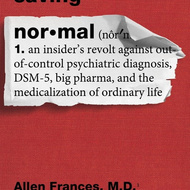衝撃映像公開!1月6日議事堂事件の真相が明らかに 2020米大統領選挙の真相

Be part of the movement!
Welcome to the community for those who value free speech, evidence and civil discourse.Create your free account
1 comment
Feel free to reply to any comment by clicking the "Reply" button.What percentage of the population still believes that the MEDIA or the Government tells the TRUTH???????
Just asking?????????
Probably those that are too scared to think about what if you can't trust the goverment? That would mean they have to find other sources and that can be scary. They want to be taken care off, not take care of themselves. So they do some mental gymnastics and boom, they can willingly trick themselves because where you and I are scared of corrupt goverment, they are scared off being in their own and not having the big nanny sate taking care of them. At least its my working theory why being a human sheep is preferred conditions for so many, but not all. Its got to be linked to genetics somehow.
It probably has a lot to do with the 70% of the population that suffers from normalcy bias. The majority of people have always trusted government and media. It is difficult to break the pattern of a lifetime.
[encyclopedia.thefreedictionary.com]
“Normalcy bias, or normality bias, is a cognitive bias which leads people to disbelieve or minimize threat warnings.[1] Consequently, individuals underestimate the likelihood of a disaster, when it might affect them, and its potential adverse effects.[2] The normalcy bias causes many people to not adequately prepare for natural disasters, pandemics, and calamities caused by human error. About 70% of people reportedly display normalcy bias during a disaster.”
The normalcy bias causes many people to not adequately prepare for natural disasters, pandemics, and calamities caused by human error. About 70% of people reportedly display normalcy bias during a disaster.”
Good point.
Social security, government pensions, welfare are unnatural calamities that once people have become acclimatized to and dependent upon become potential disasters. Out of a "normalcy bias" people stop saving, they stop working, they don't engage in pension planning. Their future is dependent upon government and the abundance of the nation.
Government bankrupts the nation the programs end and a catastrophe is the result.
@FrankZeleniuk Sure glad I won't be around for that one!!!!!!!!
@Serg97 It's coming pretty fast!
@FrankZeleniuk Ya, but I am pretty old, thank God!!!!!!
@WorldSigh, @Serg97, @FrankZeleniuk
"It probably has a lot to do with the 70% of the population that suffers from normalcy bias. The majority of people have always trusted government and media. It is difficult to break the pattern of a lifetime. "
There is that factor yes. However it does not explain some obvious problems. Why after everyone seeing government and media lie about elections, wars, COVID, etc., and claim they don't trust govermetn and media on those things, will completely trust government and media when they hear "Russia man bad," "Slava Ukraini," or "China Gate," and Slava "Taiwan"?
Normalcy bias does not explain the clear discrepancy between those narratives.
"The normalcy bias causes many people to not adequately prepare for natural disasters, pandemics, and calamities caused by human error. About 70% of people reportedly display normalcy bias during a disaster.”"
Hmmm. I've seen people over prepare for disasters man made or natural when it comes from a source they trust or its infused with fear. "Putin will use Nuclear Weapons"... buying anti-radiation pills. "Civil war in America will happen"... enter peppers. During COVID era, wearing masks that do not work or anti-social distancing that made no sense, even in situations where there was no one else around people wear masks.
I don't know about the example used for disasters, etc., because for every case one can point out to support the claims of the authors , one can find examples where it puts it in question. So I'm not sure.
I think normally bias is not a big mystery, it’s just cognitive economy it seems to me. Much like people tend to not move very much if they don't get a reward for it or if they are not required to do so. The same is with thinking about disasters. It’s a waste of energy and counterproductive to live in a state of fear all the time, so people check out at times to save energy. On the other hand, a population or individual living in a state of fear most of the time is easy to manipulate to support political agendas they may not in other situations, or buy junk they probably will never need by people who make a profit from selling canned beans. We have to take that into account as well, don't we?
Normacy bias has normalized predatory profit-making practices as well as in our society. Such as insurance mandates, so-called social security, pension funds, etc. Basically, Ponzi schemes that play on fear and make sure people part with their money. But when disaster happens, insurance companies will bail themselves out first. After all there would be no insurance industry if it was not so profitable, meaning the house wins more than it loses. Government forces many to put their money in pensions funds or health care (sick care) schemes, etc. But it’s just a form of taxation under another name. Government and other entities spend the money soon as they get it, and when things go belly up, someone else will be in the office.
Look what hedge funds have been doing with pension funds. They gambled it away. Health Care? Where is money going to come from to feed the likes of NHS? The money is long gone. It’s just living off credit and when shit hits the fan, the last thing you will see is people being bailed out. As 2008 among other similar situations have demonstrated.
Politicians bail out their cronies and cronies use the cash to bribe the politicians, leaving plebs in the dust.
So it seems to me that normalcy bias might be a thing, but I'm not sure preparation for disasters is a good example to make in explaining it.
Wikipedia claims: "The opposite of normalcy bias is overreaction bias. Noting the effect of regression to the mean, most deviations from normalcy do not lead to catastrophe, despite regular predictions of doomsday.[further explanation needed] Both underreaction (normalcy bias) and overreaction (worst-case thinking) are cognitive flaws and may extend to patterns of cognitive distortions"
Now I'm getting even more skeptical about these terms. I don't see mentioning of moral agency, that is to say individual responsibility, and I don't see genetics being mentioned, instead it’s presented as pathology. Which leads me to suspect liberal bias or rather agenda in this one.
What I mean by that is that liberalism which infects all modern academics and institutions has a tendency to pathologize society in order to have its experts deciding who is and who is not deemed "normal." In other words, politically correct.
Here is something I found in a search engine: "Normalcy bias prevents us from understanding the possibility or the seriousness of a crisis or natural disaster, or it can lead ourselves to believe that nothing serious is going to happen. Those people most afflicted with normalcy bias are the first ones to say “...that won’t happen here,” or, “never mind the evacuation notice, it won’t be that bad.” A favorite exhibition of normalcy bias is for someone to cast doubt on the legitimacy of a crisis by citing any conspiracy theory.
Covid-19 Pandemic From a "Normalcy Bias" Approach
See what I mean. If you don't wear your mask and don't prepare for the next pandemic, than you are pathologized as conspiracy theorists. A clear manipulative tactics for extracting compliance and blind obedience from a subject, or most of the population.
But the same authority that claims this often contradicts itself, does it not? Wear masks, don't wear maks. Ivermecti does not work, oh actually it can work. Social distancing, or rather anti-social dancing, not it’s actually not a problem anymore. etc.
It seems to me that rather than what is said as normalcy bias, we are close to explaining it by brilliant video made by "paul joseph watson," called "I support the current thing."
....furthermore.... liebrals like to pathologize problems and put them in nice neat little boxes and get them out of the way and control them in this way and try to avoid being self critical about the pathologzes it creates.
"Normalcy Bias" is another liberal pathological term that can be placed in a nice little box. Similar terms might be "ADHD", "Mass Psychosis", "Gender Dysphoria", "Depression" etc.
to understand this better I present this short video worth watching
Morgoth's Review - Mass Psychosis Or Mass Obedience?
@Serg97, @FrankZeleniuk, @WorldSigh
This is off course listed in the infamous Diagnostic and Statistical Manual of Mental Disorders (DSM).
The current Diagnostic and Statistical Manual of Mental Disorders (DSM)-5 arose from a tradition filled with haphazard science and politically driven choices.
Originally it grew out of US goverment need to do some beurocracy. After WWI and later WWII it became a problem what to do with many who come back with what was than called "shell shock" or today "PTSD", and goverment commissoned a book that would clasify and neatly lable and place in boxes individual psychological problems individuals had. It also needed a way to use psychology to lable its political opponents. This became two books.
The historian Christopher Lasch criticized the Frankfurt School for their initial tendency of "automatically" rejecting opposing political criticisms, based upon "psychiatric" grounds:
"The Authoritarian Personality [1950] had a tremendous influence on [Richard] Hofstadter, and other liberal intellectuals, because it showed them how to conduct political criticism in psychiatric categories, [and] to make those categories bear the weight of political criticism. This procedure excused them from the difficult work of judgment and argumentation. Instead of arguing with opponents, they simply dismissed them on psychiatric grounds."
The Authoritarian Personality is a 1950 sociology book by Theodor W. Adorno, Else Frenkel-Brunswik, Daniel Levinson, and Nevitt Sanford, researchers working at the University of California, Berkeley, during and shortly after World War II.
The Authoritarian Personality "invented a set of criteria by which to define personality traits, ranked these traits and their intensity in any given person on what it called the 'F scale' (F for fascist)." The personality type Adorno et al. identified can be defined by nine traits that were believed to cluster together as the result of childhood experiences. These traits include conventionalism, authoritarian submission, authoritarian aggression, anti-intellectualism, anti-intraception, superstition and stereotypy, power and "toughness", destructiveness and cynicism, projectivity, and exaggerated concerns over sex.
Though strongly criticized for bias and methodology, the book was highly influential in American social sciences, particularly in the first decade after its publication:
"No volume published since the war in the field of social psychology has had a greater impact on the direction of the actual empirical work being carried on in the universities today. Glazer, Nathan. (1954). "New light on The Authoritarian Personality: A survey of recent research and criticism." Commentary 17 (March), pp. 289–297
The Authoritarian Personality inspired extensive research in psychology, sociology, and political science during the 1950s and early 1960s on the relation between personality traits, behavior, and political beliefs. The Authoritarian Personality has often provoked polarized responses: “The Berkeley study of authoritarian personality does not leave many people indifferent." The study "has been subjected to considerable criticism" since the 1950s, particularly for various methodological flaws, including sample bias and poor psychometric techniques.
The Authoritarian Personality of the 1950 soon became too heavily criticized, but already in 1952 we got ourselves a new book to replace it. The current Diagnostic and Statistical Manual of Mental Disorders (DSM), now in its fifth edition. Ever more thicker and full of weaponized terms.
..........................
Medical 203
The immediate origins of DSM lay not in the statistical classification for the mental hospitals, but in a nosology directed by psychoanalyst William Menninger, who, during World War II, was a brigadier-general and the head of psychiatry in the Office of the Surgeon General. The military nosology appeared in October 1945 as the Technical Medical Bulletin number 203 of the United States Army, and it was thereafter referred to as Medical 203. The bulletin breathed the spirit of psychoanalysis, describing “psychoneurotic disorders” as “resulting from the exclusion from the consciousness (ie, repression) of powerful emotional charges, usually attached to certain infantile and childhood developmental experiences.” Drawing on Johns Hopkins psychiatrist Adolf Meyer, as well as on Freud, the disorders were referred to as “reactions.” Of “dissociative reaction” it was said, “in acute cases, the personality (ego) disorganization appears to permit the anxiety to overwhelm, and momentarily govern the total individual. The repressed impulse, giving rise to the anxiety, may be either discharged or deflected into various symptomatic expressions such as fugue, amnesia, etc.” This document became the basis of psychiatric classification in postwar America.
US psychiatry goes it alone
As stated, with the exception of the Kraepelinian psychotectonics, most of the Central European writing on nosology never came to American attention. It essentially became forgotten. Why is this?
For one thing, the events of World War II and the Holocaust tended to discredit German as the international language of science. In some quarters, the verys ound of the German language was heard with dismay. The world's scientific center of gravity was shifting from Berlin, Munich, and Vienna to New York and quite particularly to Bethesda, Maryland, where a generous Congress was investing huge amounts of federal money in research at the National Institutes of Health (NIH) , one of which was the National Institute of Mental Health (sometimes independent of the NIH, sometimes not).
Ugo Cerletti, by now an emeritus professor of psychiatry in Rome and the originator of electroconvulsive therapy, told an English-speaking audience in the mid-1950s (reading laboriously from a manuscript text heavy with diction directions):
“Sixty years ago, when I began to work in psychiatry, the languages that in Europe seemed indispensable were two - German and French. And therefore it was necessary for me to learn them well. In these sixty years, scientific research in English-speaking countries has taken so formidable a jump forward, that English has become the international language, and I am reduced to presenting myself to you, not speaking English, but rather to clumsily reading to you. Excuse me.”
(Cerletti papers, Kansas State Historical Society, Topeka, KS).
During these years, Freud's psychoanalysis, which had no use for hoary German diagnostic traditions, vaulted to the fore. Psychoneurosis was the main diagnosis in psychoanalysis, its fundament anxiety. In the index of Freud's collected papers, the entries referencing Freud's articles on “anxiety” (angst) go on for a full 11 pages. Small wonder that in postwar America, with its infatuation with psychoanalysis, anxiety suddenly became the disease du jour, trumping “nerves,” “catatonia,” and those other now-forgotten German diagnoses. Catatonia became a subtype of schizophrenia; this was, admittedly, something Kraepelin had initiated, yet much German psychiatric opinion opposed the downgrading of this important diagnosis to a subtype of something else.
Under the influence of psychoanalysis, US psychiatry began to lose interest in the systematic study of psychopathology that had distinguished the German school. Baltimore psychiatrist Wendell Muncie, after several years of training in German psychiatric hospitals, said, in 1935, that the difference between American and German psychiatry lay “in the German dominance of the concept of disease entity, in which'mental illness' was practically synonymous with'brain illness'.” In the US, by contrast, the rather vague ideas of Meyer, who was dedicated to psychoanalysis, prevailed. In Meyer's thought, patients had to be understood in their own terms, a notion that, however laudable in its humanitarian objectives, ruled out the quantitative scientific method.
The psychoanalytic period began to be rung out with the introduction of effective new pharmaceutical agents. At a 1959 conference, the year the tricyclic anti-depressant imipramine was launched in America, Hans Hoff, professor of psychiatry in Vienna, told a conference at McGill University that he and “Paul Schilder (a Viennese colleague, then at Johns Hopkins University) had once tried to destroy the Kraepelinian nomenclature because of the feeling that psychodynamics and personal reactions were more important.” However, now that a treatment for depression was available, “Diagnosis is essential,” said Hoff.
Is it, therefore, any wonder that the American disease-designers, as they sat down to compose their own nosology, were largely cut off from the rich continental traditions of learning?
DSM-I: 1952
In 1948, unhappy about the confusing diagnostic systems currently in play, the APA asked its Committee on Statistics to take in hand the preparation of an official nosology that would preclude all others. George Raines, head of neuropsychiatry at the Navy Department Bureau of Medicine—later director of psychiatry at the Georgetown University Medical Center—was evidently seconded to assist in the effort. In 1952, what subsequently became known as UDSM-F“ was published.
Despite Raines' insistence in the preface on wide streams of input, it was pretty much a rehash of Medical 203. The wording of the sections on ”anxiety reaction“ and ”depressive reaction“ (in DSM-I, the latter became termed ”neurotic depressive reaction&ldquo
By 1962, DSM-I had gone through fifteen printings. Increasingly unmoored from psychoanalysis and its main diagnosis of psychoneurosis, psychiatry was clearly in need of diagnostic guidance.
The ever greater size of the volumes—DSM-IV had 886 pages, DSM-5 had 945—began to create the impression of a diagnostic sausage machine that was somehow cranking out of control. Paul Chodoff, speaking from the perspective of 60 years of practice, said in 2005:
As new diagnoses proliferate in each successive DSM... I feel concern about a burgeoning furor diagnosticus—offering a name and number for every untoward feeling or behavior in a way that trivializes the human condition by denying its inescapable, somber, and even tragic elements.
Chodoff, a psychoanalyst, may be pardoned a bit of nostalgia. However, this feeling of unease became increasingly palpable.
DSM-III and its successors arose on the ruins of psychoanalysis and promised a singing tomorrow for US psychiatry. The promise, in 1980, seemed enormous. Today, the field contemplates DSM-5 with apprehension. An identical description of “depression” seems to crop up on every other page. Have we overdone this? Has depression become the tail that wags the classificatory dog? If there is a backlash against depression, what will be lost? These are big questions.
- The history of nosology and the rise of the Diagnostic and Statistical Manual of Mental Disorders, Edward Shorter, PhD*
..................................
Our Increasing Insanity: The Evolution of the DSM by ZoomRx
The evolution of the DSM has played a leading role in the medicalization of psychiatry, and has consequently sparked controversy. Proponents argue the hyper-specificity of DSM-V has led to more accurate diagnoses, while critics argue it has simply led to more.
Saving Normal: An Insider's Revolt Against Out-Of-Control Psychiatric Diagnosis, DSM-5, Big Pharma, and the Medicalization of Ordinary Life (2014 )by Allen Frances
In earlier editions of DSM, religion meaning Christianity was not considered as a problem because it was at the time politically correct, while homosexuality was pathological. Some activism later, and now Christianity is a disease, muscularity is a disease and homosexuality is not. What does that tell you?
You want to talk about "normalcy bias" try searching for a critique of this term or any proper analysis of its claims, and you will be hard pressed to find any at all? What does that tell you? To me it tells a lot.
“Liberalism has failed, not because it fell short, but because it was true to itself. It has failed because it has succeeded. As liberalism has become more fully itself, as its inner logic has become more evident and its self contradictions manifest, it has generated pathologies that are at once deformations of its claims, yet realizations of liberal ideology.
A political philosophy that was launched to foster greater equity, defend a pluralist tapestry of different cultures and beliefs, protect human dignity, and of course expand liberty in practice generates titanic inequality, enforces uniformity and homogeneity, fosters material and spiritual degradation, and undermines freedom.”
― Patrick Deneen, Why Liberalism Failed (2018)
Reminds me of what someone said. Liberalism delivered what it promised, but it was the opposite of what most expected.
And so, we arrive at a world to a large extent controlled: professionally, socially, financially, politically, etc., by the multi tenticular pharmaceutical giants. The proliferation of mental illness (furor diagnosticus) via the mechanism of the snowballing DSM, became a virtual license to print money by the billions. Given such a vast trove of power and money, it was inevitable that the entire medical system would eventually succumb to the most prevalent psychopathy of our age, the soul consuming addiction to power. Ironically, the aphorism “absolute power corrupts absolutely” is manifested on every level by the very system responsible for the diagnosis and treatment of mental illness. It was inevitable that this corruption would metastasize to every facet of the corporate medical juggernaut.
Recent Visitors 11
Photos 11,795 More
Posted by JohnHoukWATCH OUT FOR AN AI TYRANNY & NSA Spying SUMMARY: I’ve witnessed too many dark-side leaps and bounds to give credence to AI-Tyranny naysayers.
Posted by Sensrhim4hizvewzCohencidence or PLANNED???
Posted by Sensrhim4hizvewz Hopefully, everyone catches it and everyone gets better
Posted by JohnHoukFBI Investigates Baltimore Bridge Collapse! Suggests NOT an Accident! SUMMARY: On 3/27/24 I shared a Lara Logan Tweet on her opinion of what caused the Francis Scott Key Bridge near Baltimore ship ...
Posted by JohnHoukPolitical Tyranny – Part Two Videos Showing the Political Tyranny of Factionalism & Globalist Entanglements SUMMARY: IN Part 1 I used President Washington’s 1796 Farewell Address as a ...
Posted by JohnHoukPolitical Tyranny – Part One President Washington Warned of the Insidious Outcome of Political Factions & Foreign Entanglements SUMMARY: George Washington – RIGHTLY SO – is called the Father...
Posted by JohnHoukFuellmich Political Persecution Encapsulates Globalist Lawfare SUMMARY: A few thoughts on Deep State Political Persecution of Trump & Supports.
Posted by JohnHoukLooking at Birx Not Fauci Managed Medical Tyranny Includes Personal Observations on Legit President Trump SUMMARY: Looking at a VNN examination of the short Documentary: “It Wasn't Fauci: How ...
Posted by FocusOn1Uh oh, i hate to say this, but israel was formed in 1948, 100 years after karl marx wrote his book. Was it formed as a atheist communist country?
Posted by MosheBenIssacWith woke fat ass acceptance, only applies to women (fat bitches). What used to be funny is now illegal. The video won a Grammy Award for Best Concept Music Video in 1988 [youtu.be]
Posted by JohnHoukRemember WHY You Are Resisting the Coup Summary: Well… It’s series of videos time again.
Posted by JohnHoukA Call for Intercession Over WHO Power Grab Treaty SUMMARY: A call for prayer on America’s leaders related to the National Sovereignty terminating Pandemic (better known as Plandemic) Treaty.
Posted by MosheBenIssacDisney COLLAPSES Billions Lost In MINUTES After Shareholders Troll Company Sticking With WOKE! [youtu.be]
Posted by JohnHoukIntro to Maj.
Posted by FocusOn1Communists murdered people on the titanic
Posted by JohnHoukAnti-Medical Tyranny Read Over the Easter Weekend 2024 SUMMARY: Here are two posts focused on combatting Medical Tyranny… 1) Dr.






